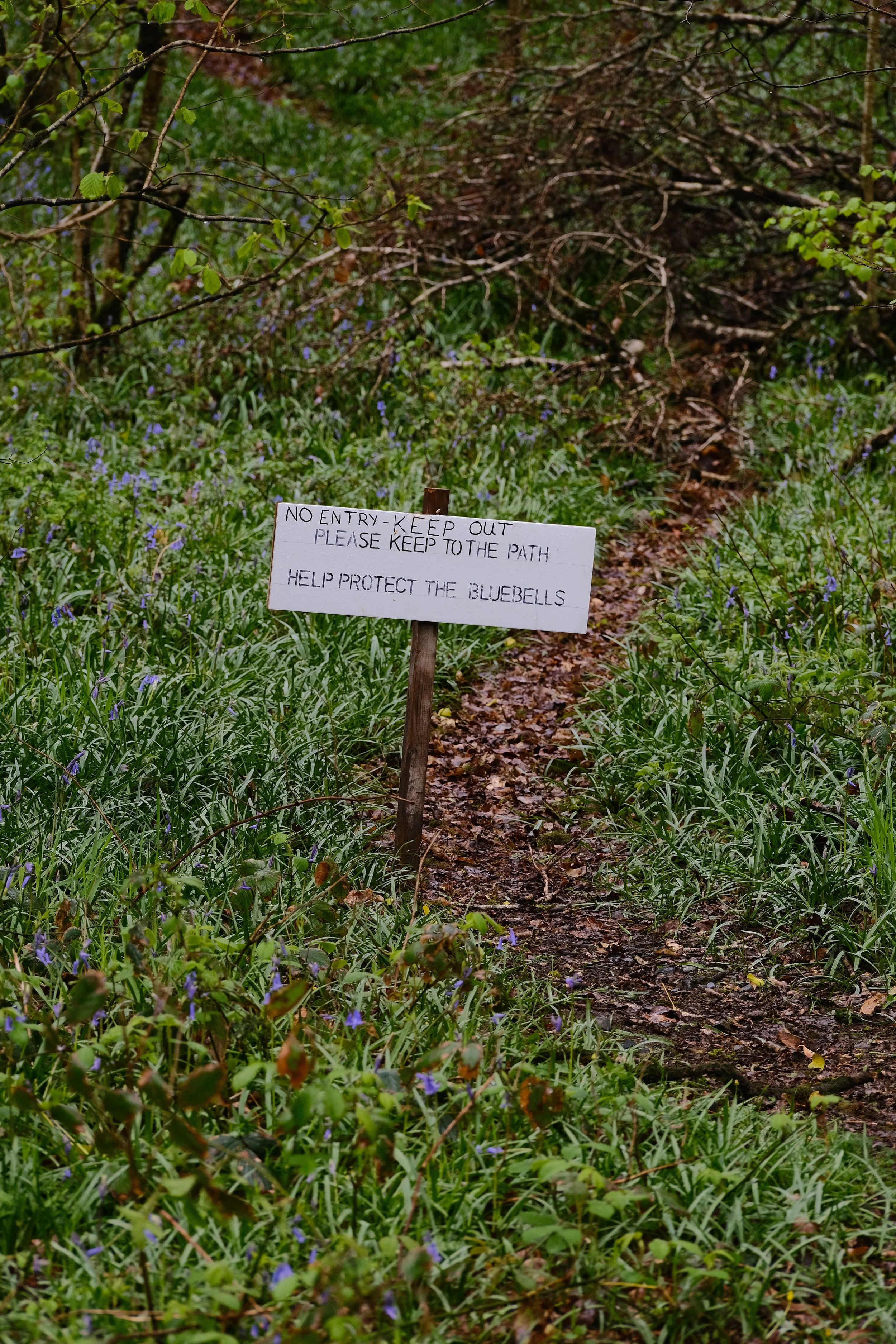Nature First: responsibility for outdoor photographers
I’m lucky enough to live close to some of the best bluebell woods in Southern England. I could tell you more about them, but I won’t. And here’s why…
Today is earth day.
Each year people switch on to the importance of the planet for one day. People share beautiful images of the natural world, and then it’s done for a year. But the habitats, natural processes that support them, and the species that thrive in them don’t suddenly vanish after April 22nd is done and dusted.
There’s plenty of evidence of the impact that social media and photography are having on the environment.
Liked to death: the impacts of social media and photography on biodiversity.
This study is one example of many papers that summarise the impact. It provides a succinct picture of the problem:
It is increasing direct and indirect disturbance to wildlife.
Direct disturbances include predation and disruptions to breeding and feeding.
Indirect impacts include diseases and increased poaching of flora and fauna.
Whilst raising awareness of issues through initiatives like Earth Day can be positive, the rest of the year these impacts continue. The paper calls for the establishment of some codes of conduct around promoting flora and fauna on the internet. For a while now i’ve been signed up to the principles established by Nature First. They function in just the manner the paper linked above advocates for.
I chose to do this having worked in the environmental sector for 20 years, having studied it at university and seen the devastation of activities such as palm oil production and logging first hand. I signed up as I wanted to show commitment to being responsible when capturing images of nature, but also to help remind of the importance of my actions, and to encourage others to consider taking the same route.
If you don’t know about Nature First, the principles are as follows:
🌳 Prioritise the wellbeing of nature over photography
Wild places are special, each impact we have on them lasts for longer than our visit. So we should, therefore, be mindful of this, and tread lightly to preserve important places as they were before our arrival.
🪻Educate yourself about the places you photograph
Different landscapes, habitats and species can be impacted in different ways. Knowing about this before visiting can help ensure we take the best care possible.
⚠️ Reflect on the possible impact of your actions
One example pertinent to Dartmoor National Park is the use of drones - they are prohibited under the park’s byelaws. This is due to the reports of inappropriate uses in the past disturbing wildlife and livestock. Knowing the direct impact of what you’re doing, and the indirect impact of promoting it to others by sharing it online is important.
📍Use discretion if sharing locations
The more detailed description of the Nature First principles states that“keeping natural areas off the radar is the best way to protect them”. Some honeypot locations are beyond the point of no return in that respect and are more likely to have infrastructure in place to cope with the potential limit of visitation. Smaller, less familiar, but equally beautiful spots won’t cope with the same level of attention. Some areas, like the bluebells can be seasonally sensitive - this is why I haven’t mentioned the location of the woods in the photo above or on social media.
✅ Know and follow rules and regulations
The paths through the woodland allow great access to see the bluebells from all angles. However some of them are shut off to public access. Every year I visit these woods I see photographers with tripods set up, standing beyond the signs with their bags lying on the floor squashing the very flowers they’ve gone to capture images of.
There are plenty of opportunities to see the bluebells from the permitted paths. It can take over 5 years for bluebells to grow, but only 5 seconds to destroy them. Is it really worth it?
♻️ Always follow ‘leave no trace’ principles and strive to leave places better than you found them.
Leave No Trace is widely known. Often i’ll come home with some litter left behind by others, I think of it as the 2 minute beach clean equivalent whilst wandering wherever I am.
🤝 Actively promote and educate others about these principles
These guiding principles will help make your trips into nature just that little bit less impactful.
This approach, along with my environmental knowledge and photographic principles of not post processing has resulted in me working with several environmental organisations and projects, such as Moor Trees, Dartmoor National Park Authority, the Central Dartmoor Farm Cluster Landscape Recovery Project and more besides.
I’m proud to bring Nature First into my work, and to help deliver the goals of others with my images in a sustainable manner. The principles have worked well for me, i’ve learnt a lot in the process. I’d encourage you to have a go at employing them too.




